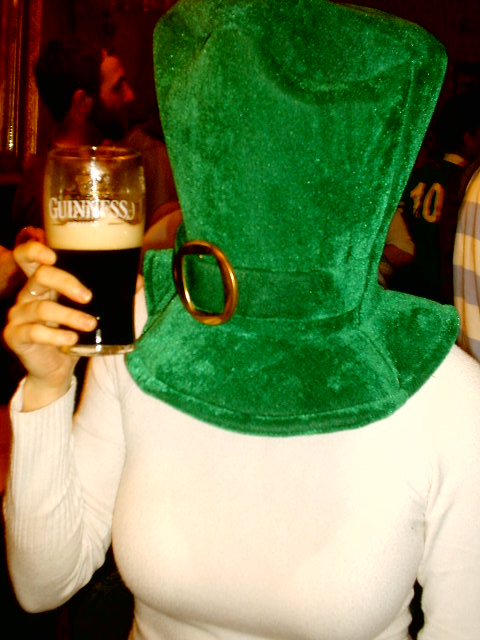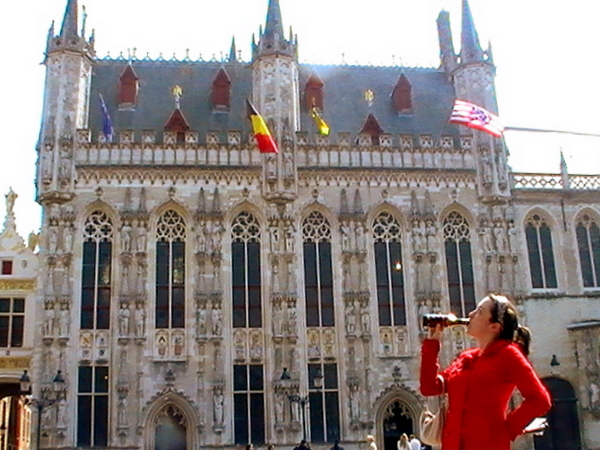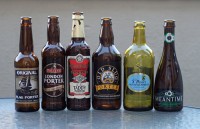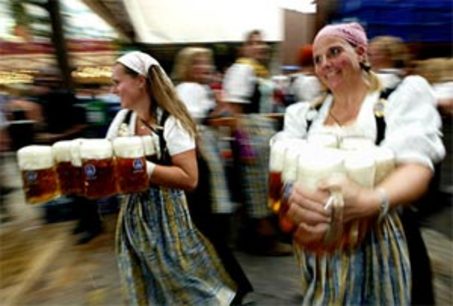In time for another of Europe’s favourite days for a tipple of beer – St. Patrick’s Day – here is a guide to five countries where you’ll get a history lesson with every pint (don’t worry, you won’t be quizzed).
 When you think European beverages, you probably conjure up French wine, Italian Limoncello, Russian vodka, or maybe Greek ouzo if you’re adventurous. European beer, although always a reliable standby, might not be the first beverage on your lips.
When you think European beverages, you probably conjure up French wine, Italian Limoncello, Russian vodka, or maybe Greek ouzo if you’re adventurous. European beer, although always a reliable standby, might not be the first beverage on your lips.
Truth is, beer is as much a part of European culture as fine art, food and architecture. America might boast more breweries than any other country, but there’s something special about sipping a 200-year-old beer in a European bar that’s even older. It’s no surprise that one of the continent’s most beloved festivals – Oktoberfest – is a celebration of all things hops.
Czech Republic
The Czech Republic makes a good argument for being the home of beer as we know it. Pilsner, which today describes any light beer, originated in the Bohemian town of Plzen in the 19th century. Budweiser, North America’s number 1 beer, was brewing in the Czech town of Ceske Budejovice for 100 years before the Americans put it into a six-pack. And in case anyone doubted their claim as the Masters of Beer, the Czechs have topped the list of most beer drinkers per capita. So when in the Czech Republic, pick a side in the Budweiser debate and enjoy a few pints, because chances are everyone around you will be having one too. See more on Czech Beer
Belgium
 It’s one of Europe’s smaller countries, but with over 125 breweries and 800 varieties, Belgium is one of its largest beer-producers. Not to mention, officially-”the best”. Rate Beer, which surveys over 100,000 beers worldwide, consistently places Westvleteren 12 ale, from the Trappist Abbey of Westvleteren, at the top of their list. Belgium is home to six of only seven Trappist breweries, the oldest dating back to 1836. Some of these breweries, including Westvleteren, only sell beer at the Abbey itself, making Belgium simultaneously the producers of the world’s most exclusive beers, as well as the most commercial beers, such as Stella Artois and Hoegaarden, which pour from taps the world over. You’ll know a Belgian beer from its brown bottle: each beer lable has its own, many even have their own glass with a shape that is specially paired with the flavour. Whether you’re drinking a Stella from its goblet, or a fruity Fruli in a tulip, the choices in Belgium are endless.
It’s one of Europe’s smaller countries, but with over 125 breweries and 800 varieties, Belgium is one of its largest beer-producers. Not to mention, officially-”the best”. Rate Beer, which surveys over 100,000 beers worldwide, consistently places Westvleteren 12 ale, from the Trappist Abbey of Westvleteren, at the top of their list. Belgium is home to six of only seven Trappist breweries, the oldest dating back to 1836. Some of these breweries, including Westvleteren, only sell beer at the Abbey itself, making Belgium simultaneously the producers of the world’s most exclusive beers, as well as the most commercial beers, such as Stella Artois and Hoegaarden, which pour from taps the world over. You’ll know a Belgian beer from its brown bottle: each beer lable has its own, many even have their own glass with a shape that is specially paired with the flavour. Whether you’re drinking a Stella from its goblet, or a fruity Fruli in a tulip, the choices in Belgium are endless.
England
 Whether it’s a cold lager by the river, an after-work bitter in a busy London bar, or a cream ale in a pub full of leather wingbacks, drinking beer is as quintessentially English as a cuppa. Its Irish neighbours have made stout their own, but English porter, named for the 18th century London Thames porters who loved it, was the original dark beer. Wander into any city or countryside pub and you’ll find many varieties of English porter that are as fun to order as they are to drink: my favorite’s a Santa’s Butt!
Whether it’s a cold lager by the river, an after-work bitter in a busy London bar, or a cream ale in a pub full of leather wingbacks, drinking beer is as quintessentially English as a cuppa. Its Irish neighbours have made stout their own, but English porter, named for the 18th century London Thames porters who loved it, was the original dark beer. Wander into any city or countryside pub and you’ll find many varieties of English porter that are as fun to order as they are to drink: my favorite’s a Santa’s Butt!
Ireland
The English might have invented stout, but the Irish perfected it, painted it black, and named it after the man who was so confident in his beer that he signed a 9000-year lease on the brewery. The rumours are true: Guinness tastes better in Dublin. No city is prouder or more protective of its beer; visit the Guinness Brewery, or just sit next to any Dubliner, to learn all about the art of the perfect pour, the perfect temperature and wait-time, and whether or not it should be topped with a shamrock. On any given day, 10 million pints of Guinness are consumed worldwide. On St. Patrick’s Day, that number shoots to 13 million pints: tenfold the amount of beer drank daily at Oktoberfest! But long before the rest of the world put on a leprechaun hat and dyed its beer green, the Irish were licking their Guinness mustaches and shouting “My Goodness! My Guinness!”. Here’s a tour of Irish Breweries and a Guide to Irish Beer
Germany
 When it comes to German beer, it’s more about quantity than quality. With 1300 around the country, including the world’s oldest, Germany is second only to the U.S. in number of breweries, despite having just a quarter of the population. Germans trail the Czechs and Irish for most beer-drinkers per capita, but they make up for it during Oktoberfest, when nearly 7 million litres of beer are consumed in just 16 days. Thankfully for those taking part in all that guzzling, German beer itself is no slouch. Since 1516, the Germans have adhered to the Reinheitsgebot, the German Purity Law, which states that beer can only be made with water, hops, yeast and barley. The law, which originated in Bavaria and applies to all 5000 varieties of beer brewed around the country, goes a long way towards keeping beer clean and preventing hangovers; in a country that downs their beer by the stein-full, you’ll need all the help you can get! Our guide to German Beer.
When it comes to German beer, it’s more about quantity than quality. With 1300 around the country, including the world’s oldest, Germany is second only to the U.S. in number of breweries, despite having just a quarter of the population. Germans trail the Czechs and Irish for most beer-drinkers per capita, but they make up for it during Oktoberfest, when nearly 7 million litres of beer are consumed in just 16 days. Thankfully for those taking part in all that guzzling, German beer itself is no slouch. Since 1516, the Germans have adhered to the Reinheitsgebot, the German Purity Law, which states that beer can only be made with water, hops, yeast and barley. The law, which originated in Bavaria and applies to all 5000 varieties of beer brewed around the country, goes a long way towards keeping beer clean and preventing hangovers; in a country that downs their beer by the stein-full, you’ll need all the help you can get! Our guide to German Beer.


Comments